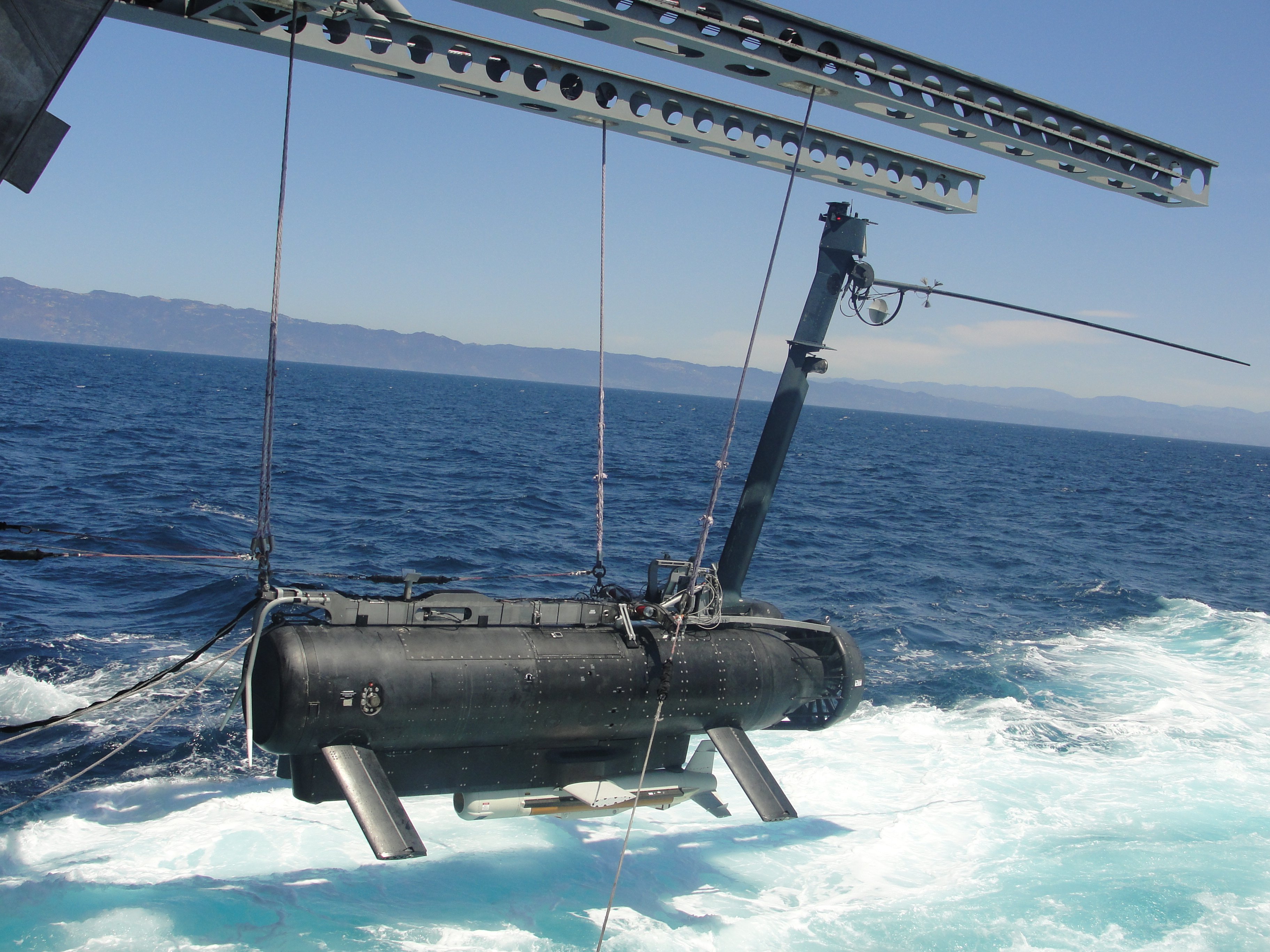
The Littoral Combat Ship’s mine countermeasures (MCM) mission package will not reach initial operational capability (IOC) by the end of September as planned, after reliability issues forced the program to stretch out the test period and delay Pentagon-level initial operational test and evaluation (IOT&E).
USS Independence (LCS-2) has been off the coast of Florida conducting a technical evaluation since April, and that test event was supposed to have wrapped up by early June to allow for IOT&E this month and a final IOC declaration by the end of the fiscal year, Sept. 30.
But LCS Mission Modules Program Manager Capt. Casey Moton said Thursday at a Mine Warfare Association lunch that across-the-board reliability problems in the two start-to-finish mine clearance runs in the technical evaluation led the program to extend the evaluation for several months rather than move prematurely to IOT&E.
“At a high level, we’ve been pleased with the performance of the individual MCM systems in detecting, classifying and identifying mines,” he said.
“Each of the systems is doing well in the missions that they were designed to do – they’re finding mines on the bottom, they’re finding mines in the near-surface, they’re finding mines in the volume. And frankly, they’re doing so I think better than we, in some cases, anticipated.”
But, Moton continued, “my primary focus right now is reliability. It’s not enough that the systems are good at detecting, classifying and identifying mines – I need to deliver systems that can offer sustained, repeatable performance. And so far, I’m not satisfied with how that’s going. I’m not satisfied with that performance,” he said.
“In the runs so far, principally in Run Number Two, we experienced some ship and some system mission package failures that hurt our reliability. So we’re very confident that we know all the issues that occurred, there’s not a one of them that we don’t have a corrective action path that’s being executed. So I’m confident. But what we have decided to do is, we’re going to add some run time to techeval. So we’re going to make [the technical evaluation] go a little bit farther because we want to be rock solid as we head into IOT&E. There is going to be a delay, we’re talking a few months – I don’t want to give you an exact number, it’s not a year but it’s not a couple weeks either. It’s going to be a couple months.”
Moton said there was not a single point of failure in the testing – in some instances, the ship itself had a failure, in some cases a procedure proved unworkable for the Navy crew and in some cases there were integration flaws. He added that the actual mine detection tools – the Airborne Laser Mine Detection System (ALMDS) and the Airborne Mine Neutralization System (AMNS) experienced fewer problems out at sea. Rather, the integration issues affected the communication system for the mission package and the launch and recovery system for the Remote Multimission Vehicle (RMMV), for example.
As for the procedural problems, Moton said that a procedure developed by a subject matter expert may, in theory, be the best way to accomplish a task, but it may not make the most sense for a crew of sailors on a ship at sea. In those instances, this extended techeval period simply buys more time to work out the kinks before demonstrating the crew’s and systems’ performance for Pentagon testers.
Moton praised the crew, which underwent extensive training last fall and is “showing significant proficiency,” as well as resiliency during this lengthy preparation period. He said shore support, including a remote operating station, was also performing well and made him confident that the ship and its MCM mission package would be well taken care of on deployment.
He added that the testing community, both in the Navy and at the Pentagon, were supportive of the decision to delay IOT&E until all the reliability issues are worked out. The office of the Director of Operational Test and Evaluation (DOT&E) is looking at the schedule now to determine when the test may be rescheduled.
Overall, Moton said he’s not concerned about the mission package’s ability to reach IOC.
“There’s not a single [failure] that caused us to look at the systems and say, that’s not going to work, or we’re going to have to take and off-ramp. It’s all stuff we can go after.”





